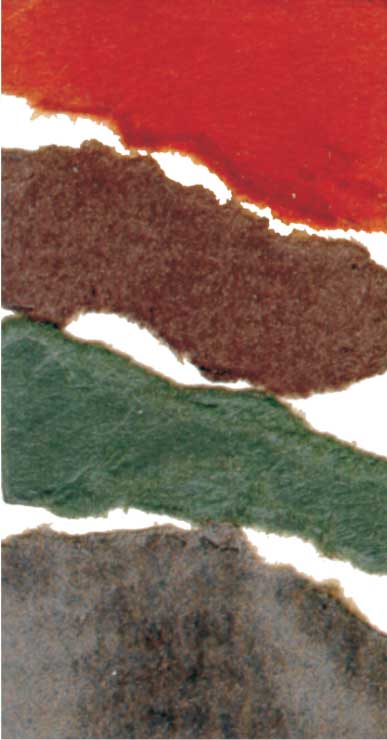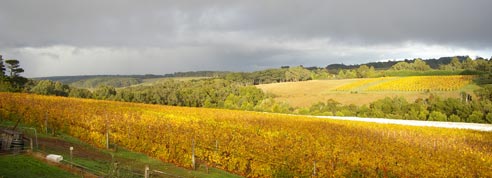
The Vineyard
The vineyard is the basis for the quality of our wines and is (I'm afraid), a hugely intensive labour of love.
The climate is cool and maritime, due to our position at the extreme South of the continent, close to the Southern Ocean, and surrounded on three sides by the sea- Port Phillip, Westernport, and Bass Strait, and also reflects our elevation at 250 m above sea level, catching more rain, cloud, and wind than areas even only a few km away, near sea level at Dromana. Premium grapegrowing areas are not always easy!
The aspect is NW to W, meaning that during the ripening period we get the benefit of the lovely warm afternoons, when the (leaf) temperatures are above 20 deg, and effective photosynthesis will produce sugars to ripen the grapes, even late into Autumn (April/May). The rows run North-South, across the slope, to achieve equal exposure of both sides of the row to the sun. Terracing of the rows prevents erosion and levels the rows to make machinery operation safe
The soils determine the health and growth of the vines and define the characters of the wines. As represented on our logo, the soils range down the slope from deep basaltic red soils, to duplex chocolate soils, to grey loam, and at the base of the slope are grey grainy granitic sandy soils. Each variety is planted to include a section on each main soil type, increasing the complexity and depth of the wines.
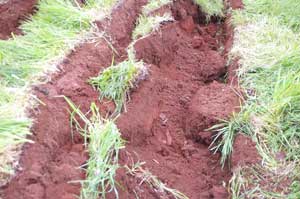
We have extremely close row spacing to reduce vine vigour and increase row surface area and thus sun exposure. Our plantings are from 1.8 m x 1.8 m to 2.2 m(rows) x 2.0 m(vines). This compares with a typical Australian planting density of 3.6 (row spacing) x 2.0m (vine spacing). In combination with our trellising system, this means we have more than 3 times the effective surface area and sun exposure of traditional Australian vineyards.
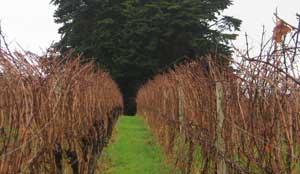
The trellising and consequently the canopy management is what takes up the most effort but is the most critical input into the quality of the grapes. The best grapes are achieved when they are fully exposed to the sun, but the climate is cool enough so that ripening is gradual and sunburning does not occur.
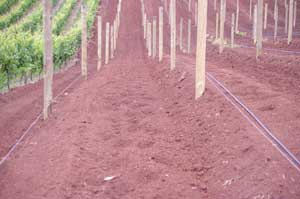
We use the Scott-Henry system (named after Mr Scott Henry, from Oregon, USA. By splitting the canopy into two halves vertically, the area exposed to sun is doubled, and the shoots are spread out, allowing penetration of light and air. Better fruit quality and reduced disease risk are both achieved. Unfortunately, this is what also takes the time, as separating the shoots into two halves, and moving all the wires is very labour intensive.
This is why large wineries cannot hope to use such methods or achieve the ultimate quality we can, with personal attention on a small scale to every vine.
The varieties we grow are Pinot Noir and Chardonnay (both from Burgundy), and Pinot Grigio (also known as Pinot Gris) which is a close relative of Pinot Noir, from Alsace, Northern Italy and also Germany and Eastern Europe.
These varieties are responsible for some of the most famous (and expensive) wines in the world, and suit our cool climate, and the styles of wine we want to make.
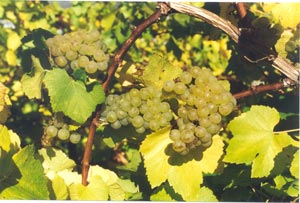
Chardonnay
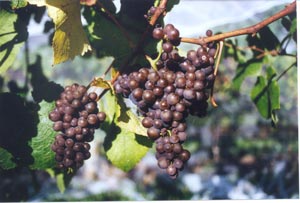
Pinot Grigio
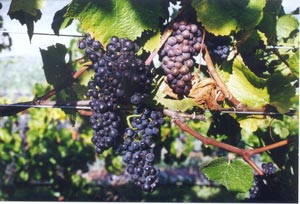
Pinor Noir next to Pinot Grigio
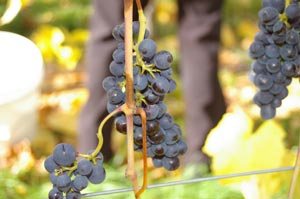
Pinot Noir
